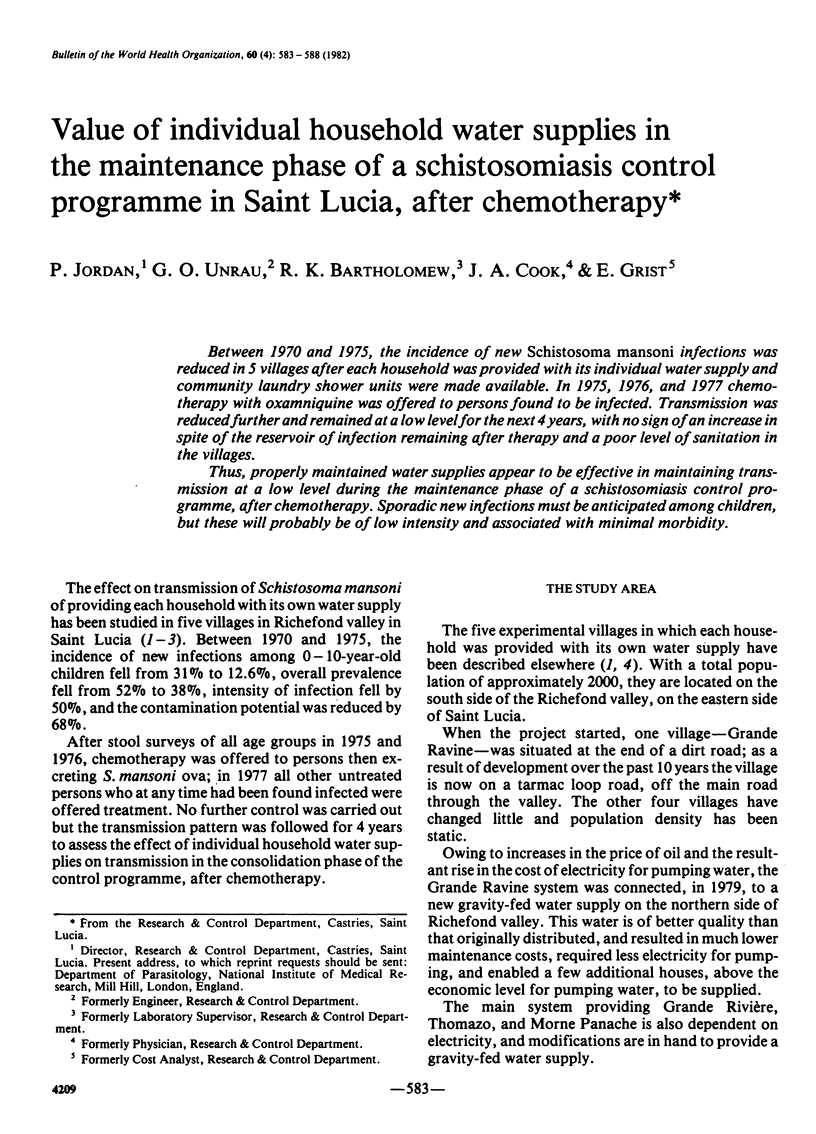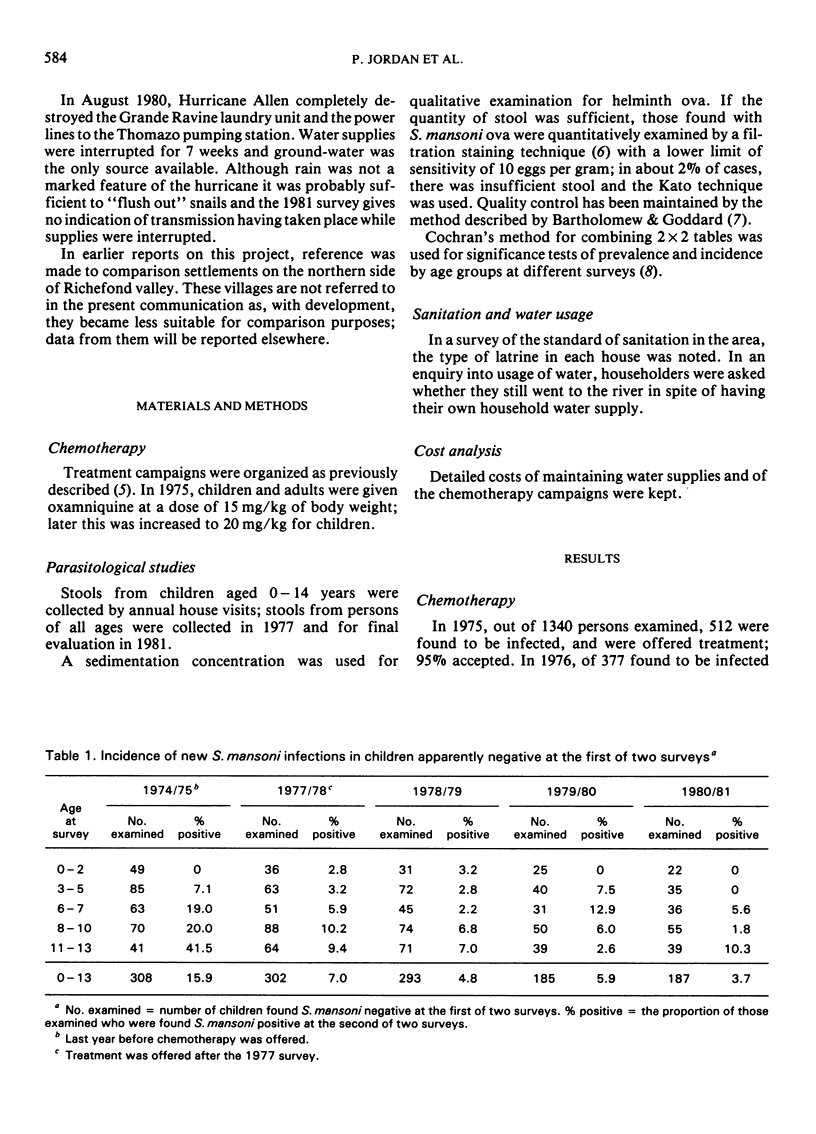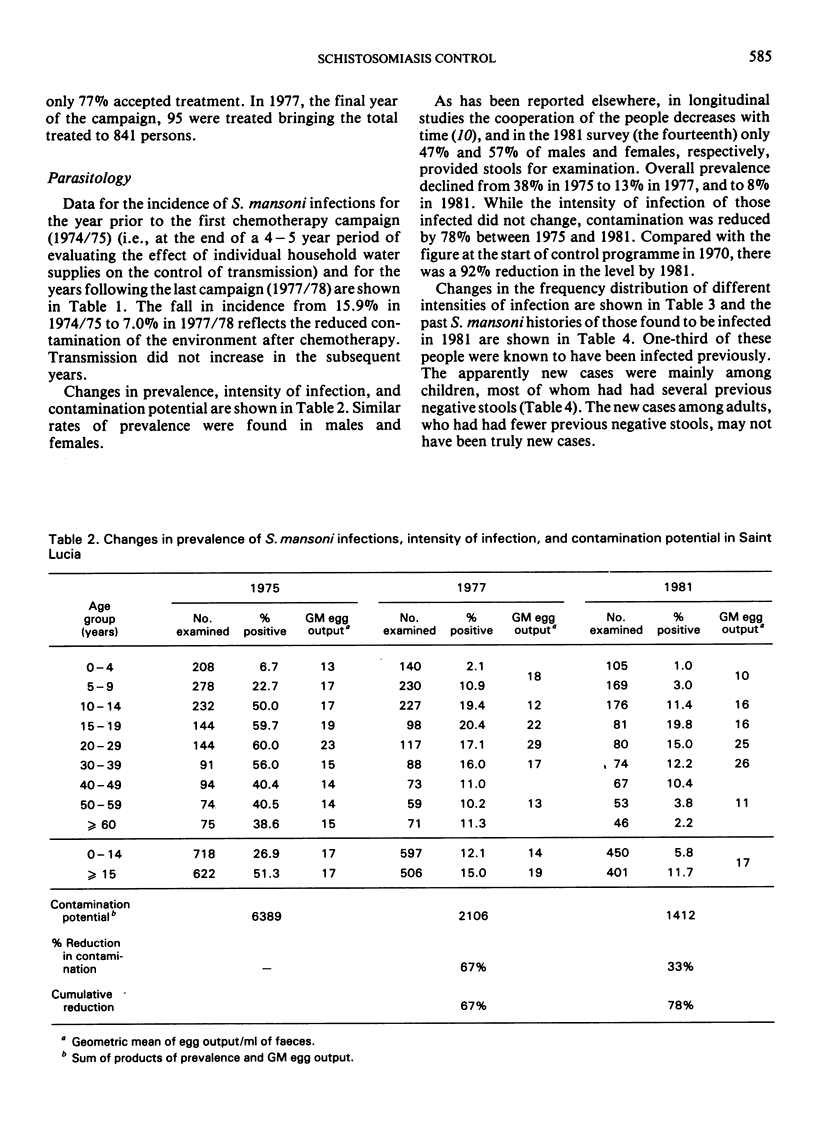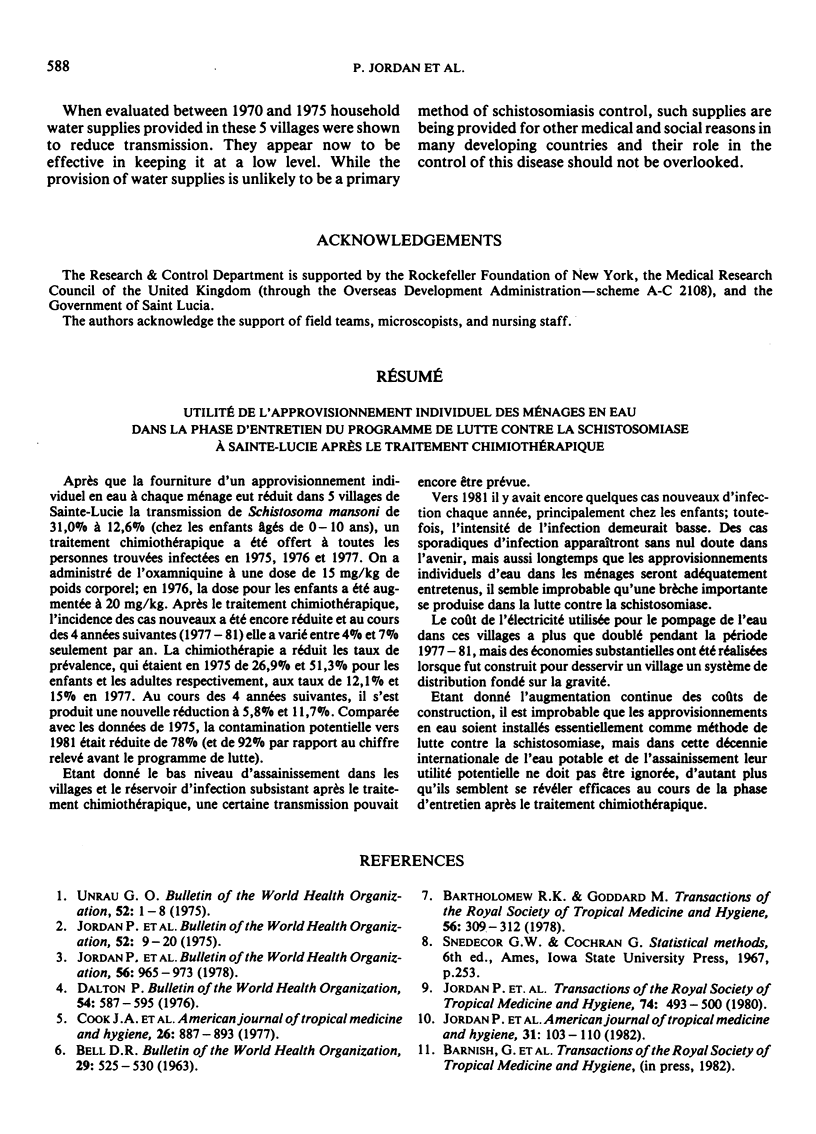Abstract
Between 1970 and 1975, the incidence of new Schistosoma mansoni infections was reduced in 5 villages after each household was provided with its individual water supply and community laundry shower units were made available. In 1975, 1976, and 1977 chemotherapy with oxamniquine was offered to persons found to be infected. Transmission was reduced further and remained at a low level for the next 4 years, with no sign of an increase in spite of the reservoir of infection remaining after therapy and a poor level of sanitation in the villages.
Thus, properly maintained water supplies appear to be effective in maintaining transmission at a low level during the maintenance phase of a schistosomiasis control programme, after chemotherapy. Sporadic new infections must be anticipated among children, but these will probably be of low intensity and associated with minimal morbidity.
Full text
PDF







